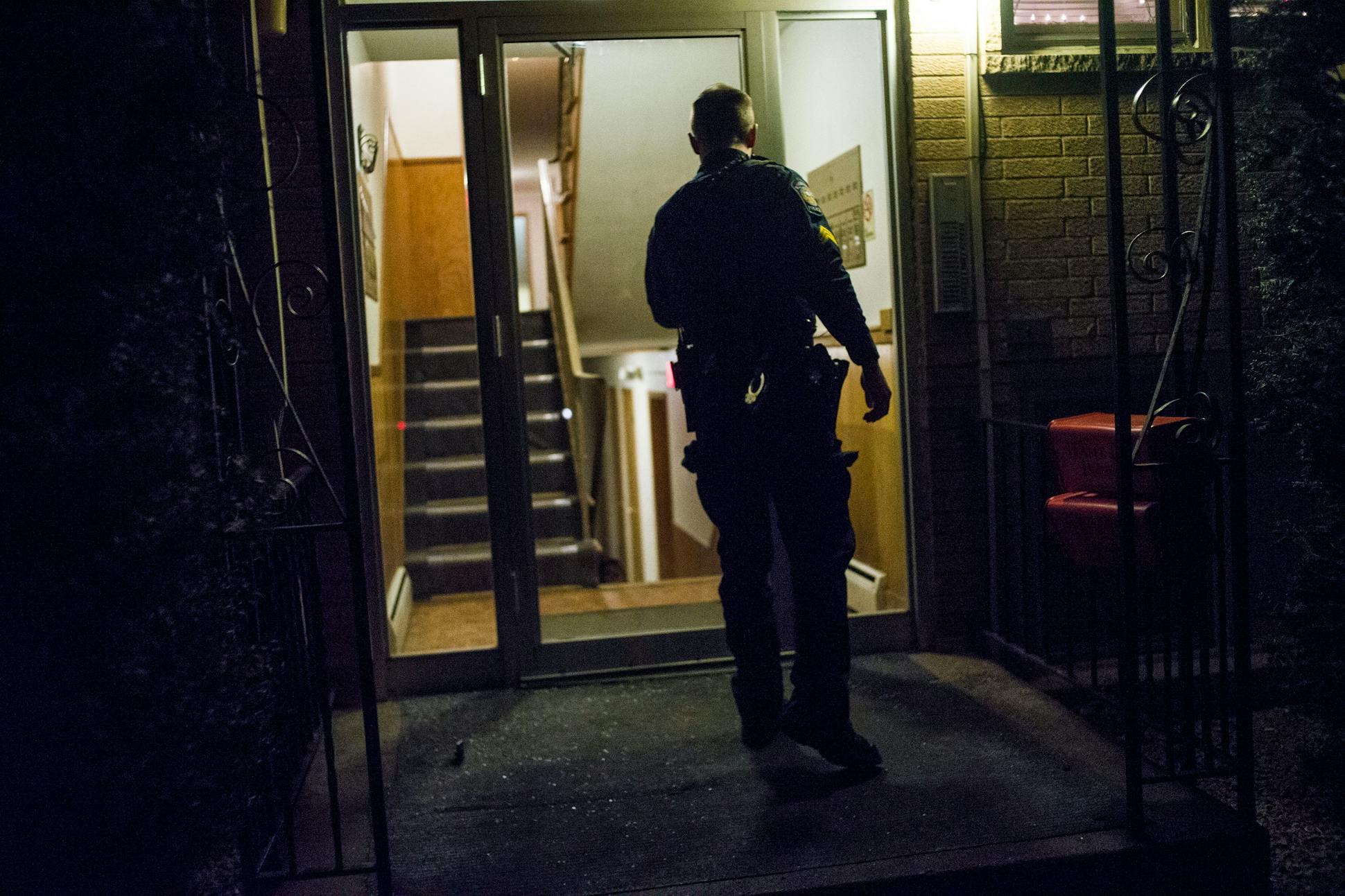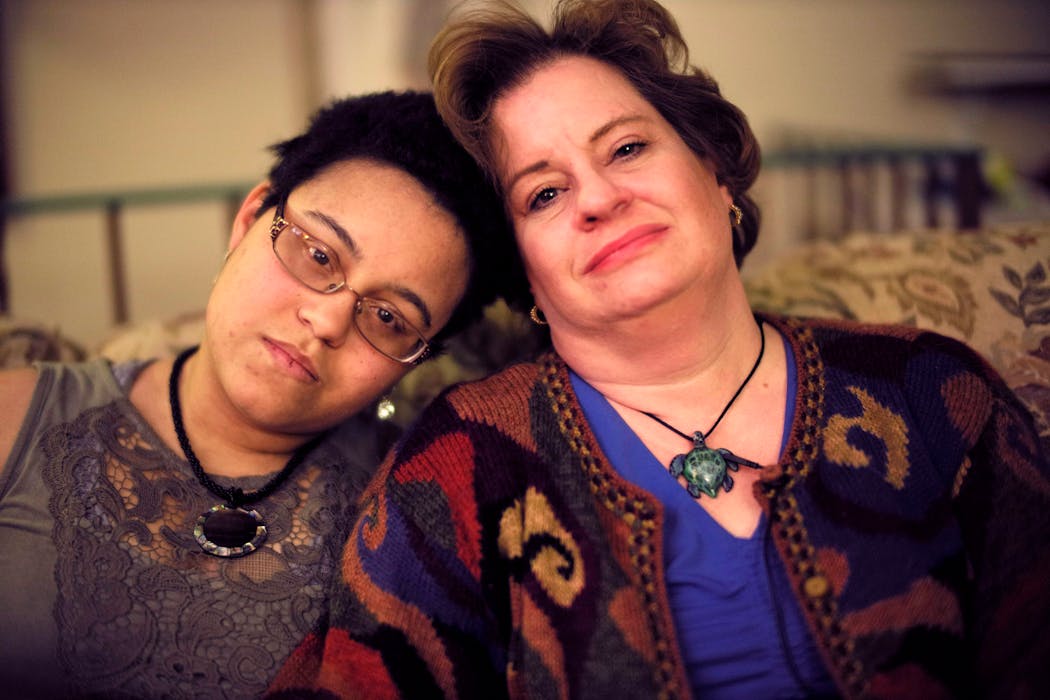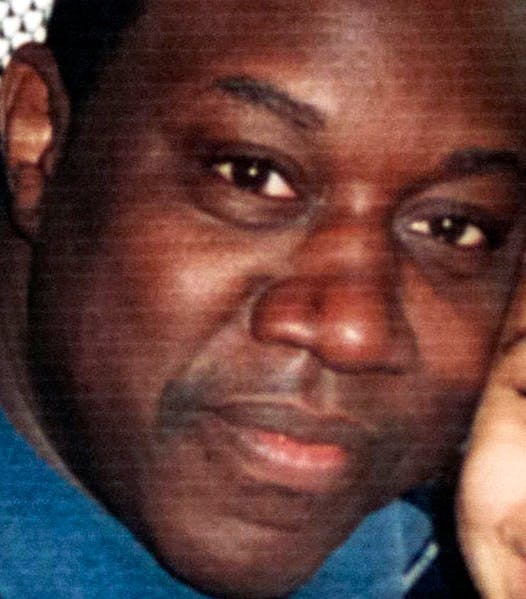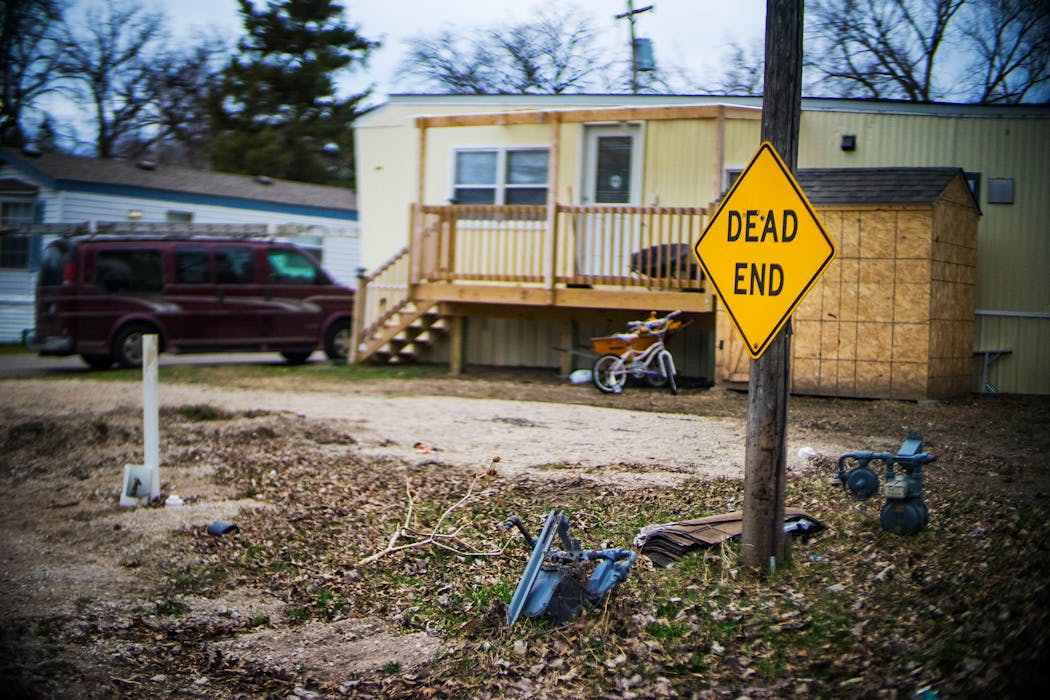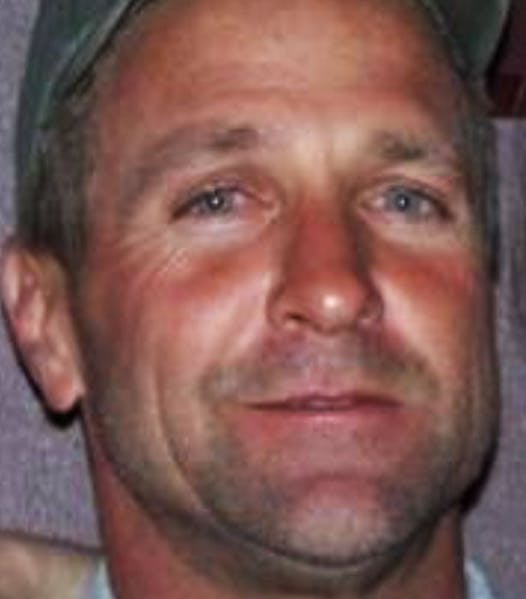Roseville police officer Joe Adams only learned their names later, in the hours after he shot and killed them.
Wayne Malone. Billy Holt.
Neither man had committed a crime. But both were in the throes of a mental health crisis when police were called for help. The encounters, three years apart, turned fatal when Malone and Holt burst out of their homes, weapons in hand, fighting demons only they could see.
A county attorney and a grand jury determined that the shootings were justified. Adams remains unshaken in his belief that on both nights he did the only thing he could.
"It's a terrible thing," Adams said. "It takes a toll on you mentally, it takes a toll on your family."
At least 45 percent of the people who have died in forceful encounters with law enforcement in Minnesota since 2000 had a history of mental illness or were in the throes of a mental health crisis, according to a Star Tribune analysis of death certificate data, court and law enforcement records and interviews with family members. That's double the estimated rate of mental illness among U.S. adults.
The overrepresentation of the mentally ill in fatal encounters with police is a national phenomenon. The Treatment Advocacy Center, a Virginia nonprofit that advocates nationally for better care of the mentally ill, estimates that people with severe untreated mental illness are 16 times more likely to be killed in a police encounter.
And the deaths are rising. In a 2015 spike, 9 of the 13 people who died statewide had mental health problems. The toll is grim proof that law enforcement agencies across Minnesota are working the jagged edge of a splintered mental health care system, where the most available tool for families facing a psychological emergency remains 911 and a squad car.
Minnesota's police officers and sheriff's deputies say they're spending more time than ever responding to mental health calls. A Star Tribune survey of nine of the state's largest law enforcement agencies found that such calls have increased an average of 34 percent in the past six years.
Despite the critical role officers play in the mental health safety net, the level of training to handle people with mental illness varies greatly from one police agency to the next. State law requires peace officers in Minnesota to get training in firearms, pursuit driving and use of force. It says nothing about training to intervene in a mental health crisis.
The Minnesota Board of Peace Officer Standards and Training, which licenses officers for the state's 439 agencies, has no model policy for mental health crisis training, or clear recommendations for departments.
Adding to the confusion, proponents of specialized mental health training hotly disagree on whether everyone on a police force or only a dedicated core should take the five-day, 40-hour course known as the crisis intervention team (CIT) model. On average, about 15 percent of officers in the state's 12 largest law enforcement agencies have undergone the full training, which teaches taking a less controlling attitude to de-escalate confrontations with people with mental illness, a Star Tribune survey showed.
It's far short of what is needed, said the state's leading mental health advocate. Every officer should have the 40 hours of training, said Sue Abderholden, executive director of the National Alliance on Mental Illness Minnesota chapter. Abderholden backed unsuccessful legislation that would have required four hours of similar training.
"They need those tools," Abderholden said. "Even if it's not the full 40, there should be something."
In Roseville, 911 calls for health-related problems have jumped 20 percent since 2011. Most of the increase involves people with psychological troubles, Roseville Police Chief Rick Mathwig said. The calls can be very time-consuming, and in the worst cases, devastating for both the families and his officers.
"Law enforcement is sometimes forced to deal with problems in our society that the rest of society refuses or fails to help, or respond, or deal with," Mathwig said. "We get called for everything."
A 911 hangup
Wayne Malone was not a complete stranger to Roseville police.
One time, in 2010, police knocked on his door by mistake and he was hit with a Taser after charging out of the apartment and attacking them. They sent him to the hospital for a psychiatric evaluation.
For Gail Malone, it was just another troubling example of the darkness that had overtaken the charismatic, fiercely intelligent former Navy military policeman she'd married. Their daughter, Grace, similarly recalls the doting father who took her to the park and lugged her musical instruments to school. He brought flowers and bags of extra classroom snacks for the teachers.
But he was becoming someone else. At first he stopped wanting to do things, like celebrate Christmas with Gail's family. He stopped working. He became controlling, paranoid and always on edge. He barely slept and rarely left the apartment, so obsessed was he with thoughts of someone breaking in.
Nothing and no one could be trusted. He escorted Gail and Grace to and from the building. Visitors were not allowed. He covered the apartment windows with sheets of Styrofoam.
He badgered Gail for a gun to protect the family. She relented and bought him a pellet handgun at Fleet Farm. He'd play with it, occasionally popping from around corners with it as if clearing a room of a potential threat.
A proud man, Malone refused to seek professional help. Twice, in 2011, Gail called 911. Each time police had an ambulance take Malone to Regions Hospital in St. Paul for psychological evaluations, as they had the time when Malone burst out of the door at officers attempting to serve an arrest warrant.
The last trip was in August 2011. Gail, who works with inmates at the Ramsey County workhouse in Maplewood, had her work handcuffs on him when officers showed up.
Regions admitted Malone on a 72-hour hold but released him after just two days.
According to the psychiatric discharge summary, Malone was not considered at imminent risk of harming himself or others. The final diagnosis: depression and an anxiety disorder.
The summary lists follow-up appointments, and prescriptions for high blood pressure medication Norvasc, melatonin to help him sleep, a multivitamin and prazosin, used to treat a range of conditions including blood pressure, anxiety and PTSD.
It also says the family agreed with the discharge plan.
Gail remembers it very differently. There were no appointments made, she said, and only the prescription for his usual blood pressure medicine. It was a Sunday, and she insisted that Regions hold him just one more day so she could make more arrangements. They wouldn't, she said.
Regions said privacy laws prevent it from discussing Malone's care.
Gail drove her husband home from the hospital that day.
Three months later, on a Thursday in November 2011, Gail lay down in bed with a sore neck. Tired of an argument with her father, Grace, then 19, retreated to her bedroom. He was unusually worked up.
"Something was off," Grace recalled.
At 8:22 p.m., Malone called 911, made gasping sounds for a few seconds, and hung up.
A young officer's decision
Joe Adams knew he wanted to be a police officer when he was just 15. He learned policing basics in the Police Explorer program in Blaine, and joined the Roseville force in 2007 right after graduating from St. Cloud State University.
Roseville is a relatively quiet first-ring suburb, dominated by its bustling Rosedale shopping mall. A force of 48 sworn police officers serves Roseville's 35,000 residents.
Like many officers across the state, Adams hasn't had much specialized mental health crisis training. He took Roseville's standard half-day class in 2007, just after being hired, called "Understanding the Black Hole of Suicide." Ten Roseville officers have taken the weeklong crisis intervention team (CIT) training. Three more will this year, but Adams is not one of them.
Adams primarily worked undercover and on street crimes, before being promoted to sergeant. Given limited resources, it makes the most financial sense to send first-line patrol officers to the training first, said Mathwig, the police chief. Crisis intervention team classes cost an average of $625 per officer for tuition, plus the cost of filling their shifts, he said.
The night Malone called 911, Adams had just wrapped up a session with the Explorer program he helped start in Roseville.
The muffled call sounded like a woman being choked and unable to talk. Adams figured it was a domestic situation. He switched on his lights and sirens and sped to Malone's apartment building. He and another officer climbed the steps to Apartment 6.
Then Adams paused. He remembered this door. A year earlier, he had been one of the three officers who had knocked on it — it turned out to be the wrong address — to serve an arrest warrant. Without a word the man who lived there barreled out, swinging. They stunned him twice with a Taser, and then sent him to the hospital.
Adams warned his partner about the man, and drew his gun. His partner readied his Taser. Adams knocked.
Almost before his hand left the door, Adams said, Malone burst out. This time he held what looked like a black handgun. His eyes were empty.
Adams was backing up, yelling at him: "Drop the gun!"
Instead Malone lifted his arm as if to shoot, Adams said.
Adams fired. He cannot remember hearing the shots from his Glock.
Malone's daughter Grace could hear them, over the music she was playing in her bedroom.
Malone lay in the doorway to the apartment. Two gunshot wounds, to the stomach and chest.
Numb, Gail sat down with her daughter on the living room floor, "and then we watched him die in front of us."
Gail doesn't blame Adams. If she had been in Adams' shoes that night, Gail said somberly, "I would have shot him too."
For Adams, the fatal shooting didn't register until he was back at headquarters, and called his mother.
"You have a lot of different thoughts that start to go through your head. Like 'What if?' 'Did I put myself in harm's way?' 'Could I have done this better?' You ask yourself a million questions, your mind just starts racing."
Adams would face those same questions again on an autumn night in 2014, when the East Metro SWAT team he's part of was called to a "barricaded suspect/possible hostage situation" at a trailer park in St. Anthony.
A daredevil's delusions
Billy Holt began crisscrossing the country to work on pipeline jobs after high school in Texas. He operated heavy equipment such as booms, the large bulldozer-like machines that move large sections of pipe with belts, cables and hooks.
He was the "best boom man in the country," said longtime pipeline buddy Thad Hutchens in Oklahoma.
They called Holt "rooster." Holt was like a feisty little bantam who wants to fight the big roosters, Hutchens said. He was a daredevil who liked sky diving, gambling and popping wheelies on his motorcycle.
"He lived life large and lived life loud," said his wife, Lori, a nurse in Ellaville, Ga. "He was the love of my life."
His struggles were also big.
Holt, 51, had been treated by a doctor in Texas for a bipolar disorder, Lori said, but stopped taking the medicine because it made him feel strange. He took clonazepam for anxiety. He had problems with drinking, heroin, cocaine and meth. The combination could make him hallucinate.
Holt, hired to work on a gas pipeline project, arrived in Minnesota over Labor Day weekend in 2014, driving the trailer that served as his home on the road. He parked it in Lowry Grove, a wooded trailer park in St. Anthony with wild turkeys scratching around.
A month later, Holt was found stumbling around late at night in a yard in rural Chisago County, far from his home or work.
Holt told officers he'd been chasing some men who'd pulled a knife on him. He didn't know where he was, and was having a hard time standing still. He blew a zero on a breathalyzer.
They took him to Fairview Lakes Medical Center in Wyoming, Minn., for an evaluation.
The next night, Holt told Lori that the cops didn't believe him about the fight. He sounded very down, Lori recalled, and said he was going to take a shower and go to bed.
Just before 10 p.m. neighbors called 911 to report shots fired in the Lowry Grove Trailer Park.
Officers streamed to the scene.
Adams and the local SWAT team arrived in a BearCat, an eight-ton armored vehicle designed for military combat. They parked about 40 feet from the trailer and flipped on spotlights.
The SWAT team was quickly briefed. The man in the trailer had told an officer outside the open door that he was being held at gunpoint by two strangers who came to rob him. He said he had fired some shots, but wouldn't come out.
About 15 minutes later, without warning, a man with a rifle sprinted out the trailer door and into the blinding spotlights. Someone hollered: "Rifle!" and "Drop the gun!"
No one knew whether Holt was robber or hostage. Adams and others calculated he might break into another trailer, and said his rifle was pointed toward officers.
Adams and two other SWAT team members fired.
There were no robbers found in the trailer. All evidence points to paranoia and delusions, said Mathwig, Roseville's police chief.
Lori Holt turns the questions over and over. What happened to Billy that night? Could she have saved him if she had called him back later?
Of one thing she is certain, though.
"I think the police overreacted," she said. "I think they could have handled the situation differently."
Is this OK?'
Mathwig considers Adams, 32 now, one of his finest cops: focused and caring. As he sees it, Adams performed his job by the book in both shootings. When there's an imminent threat to himself or others, an officer's first priority is to resolve it. Says Mathwig: "You have to get in front of that rocket first."
Mental health advocates are loath to second-guess officers facing potentially treacherous situations. Law-enforcement officers deal constantly with people with mental health problems, and the vast majority of the encounters don't end with someone dying.
The deaths go beyond police training, said Abderholden with the National Alliance on Mental Illness. Minnesota simply hasn't built a mental health system. To her, the rising deaths illustrate that.
"I would say it's a failure of our community to really make sure that people have access to the mental health services they need, when they need them," she said.
For his part, the normally stoic Adams said the shootings have "humbled" him. They've forced him to confront hard questions about what he does.
"You have to question 'Is this what I want to do? Is this OK?' " he said.
Adams has been taking night courses. Last month he graduated from the University of St. Thomas with a master's degree in police leadership. He has considered teaching. But he loves policing, he said, and will keep doing it as long as he's physically able.
When he first got back on the street after shooting Malone, Adams said his blood would rush when he'd drive by the brick apartment building on Larpenteur. One night, though, he pulled over and climbed those stairs again.
The bullet holes in the door frame had been spackled over, but outlines were still visible. Someone had placed a carpet square over a spot in the second floor hall.
Adams lifted up the scrap. A liver-colored stain still bloomed from the door to Apartment 6.
After 9 years on the force, Adams has handled everything from burglaries to sex trafficking to drug deals in motel parking lots.
More unsettling are the cries for help when there is no crime - someone off their medication, hallucinating, breaking things. There was the girl they rescued when she tried to jump off an overpass. The family hiding in a bedroom from a son holding a knife. The sister who called 911 saying her distraught brother had a gun and needed help.
By the time Adams got there her brother had shot himself in the head.
"You have zero idea of what to expect when you walk in that door."
jennifer.bjorhus@startribune.com 612-673-4683Data editor MaryJo Webster and staff writer Kelly Smith contributed to this report.

